1.
Introduction
In this paper, we consider the following initial boundary value problem for higher-order nonlinear viscous parabolic type equations.
where L,K≥1 is an integer number, R≥ max {2,2a,2H} where a>0 is a real number, and Ω⊆RN(N≥1) is a bounded domain with a smooth boundary ∂Ω.
Equation (1.1) includes many important physical models. In the absence of the memory term and dispersive term, and with L=K=1 and a=0, Eq (1.1) becomes the linear pseudo-parabolic equation
Showalter and Ting [1] and Gopala Rao and Ting [2] investigated the initial boundary value problem of the linear Eq (1.4) and proved the existence and uniqueness of solutions. Pseudo-parabolic equations appear in many applications for natural sciences, such as radiation with time delay [3], two-phase porous media flow models with dynamic capillarity or hysteresis [4], phase field-type models for unsaturated porous media flows [5], heat conduction models [6], models to describe lightning [7], and so on. A number of authors (Showalter [8,9], DiBenedetto and Showalter [10], Cao and Pop [11], Fan and Pop [12], Cuesta and Pop [13], Schweizer [14], Kaikina [15,16], Matahashi and Tsutsumi [17,18]) have considered this kind of equation by various methods and made a lot of progress. Not only were the existence, uniqueness, and nonexistence results for pseudo-parabolic equations were obtained, but the asymptotic behavior, regularity, and other properties of solutions were also investigated.
In 1972, Gopala Rao et al. [2,19] studied the equation ut−kΔut−Δu=0. They use the principle of maximum value to establish the uniqueness and the existence of solutions. Using the potential well method and the comparison principle, Xu and Su[20] studied the overall existence, nonexistence, and asymptotic behavior of the solution of the equation ut−Δut−Δu=uq, and they also proved that the solution blows up in finite time when J(u0)>d.
When L=K=1, Eq (1.1) becomes
Equation (1.5) originates from various mathematical models in engineering and physical sciences, such as in the study of heat conduction in materials with memory. Yin [21] discussed the problem of initial boundary values of Eq (1.5) and obtained the global existence of classical solutions under one-sided growth conditions. Replacing the memory term b(⋅) in (1.5) by −g(⋅), Messaoudi[22] proves the blow-up of the solution with negative and vanishing initial energies. When f(u)=|u|q−2u, Messaoudi[23] proved the result of the blow-up of solutions for this equation with positive initial energy under the appropriate conditions of b and q. Sun and Liu [24] studied the equation
They applied the Galerkin method, the concavity method, and the improved potential well method to prove existence of a global solution and the blow-up results of the solution when the initial energy J(u(0))≤d(∞), and Di et al. [25] obtained the blow-up results of the solution of Eq (1.6) when the initial energy is negative or positive and gave some upper bounds on the blow-up time, and they proved lower bounds on the blow up time by applying differential inequalities.
When m>1, Cao and Gu[26] studied the higher order parabolic equations
By applying variational theory and the Galerkin method, they obtained existence and uniqueness results for the global solution. When the initial value belongs to the negative index critical space H−s,Rs,Rs=nαw−sα, Wang[27,28] proved the existence and uniqueness of the local and the global solutions of the Cauchy problem of Eq (1.7) by using Lr−Lq estimates. Caristi and Mitidieri [29] applied the method in [30] to prove the existence and nonexistence of the global solution of the initial boundary value problem for higher-order parabolic equations when the initial value decays slowly. Budd et al. [31] studied the self-similar solutions of Eq (1.7) for n=1,k>1. Ishige et al. [32] proved the existence of solutions to the Cauchy problem for a class of higher-order semilinear parabolic equations by introducing a new majority kernel, and also gave the existence of a local time solution for the initial data and necessary conditions for the solution of the Cauchy problem, and determine the strongest singularity of the initial data for the solutions of the Cauchy problem.
When K=L,g=0, problem (1.1) becomes the following n-dimensional higher-order proposed parabolic equation
Equation (1.8) describes some important physical problems [33] and has attracted the attention of many scholars. Xiao and Li [34] have proved the existence of a non-zero weak solution to the static problem of problem (1.8) by means of the mountain passing theorem, and, additionally, based on the method of potential well theory, they proved the existence of a global weak solution of the development in the equations.
Based on the idea of Li and Tsai [35], this paper discusses the property of the solution of problem (1.1)–(1.3) regarding the solution blow-up in finite time under different initial energies E(0). An upper bound on the blow-up time T∗ is established for different initial energies, and, additionally, a lower bound on the blow-up time T∗ is established by applying a differential inequality.
2.
Preliminaries
To describe the main results of this paper, this section gives some notations, generalizations, and important lemmas. We adopt the usual notations and convention. Let HL(Ω) denote the Sobolev space with the usual scalar products and norm, Where HL0(Ω) denotes the closure in HL0(Ω) of C∞0(Ω). For simplicity of notation, hereafter we denote by ||.||p the Lebesgue space Lp(Ω) norm, and by ||.|| the L2(Ω) norm; equivalently we write the norm ||DL⋅|| instead of the HL0(Ω) norm ||.||HL0(Ω), where D denotes the gradient operator, that is, D⋅=▽⋅=(∂∂x1,∂∂x2,....∂∂xn). Moreover, DL⋅=△j⋅ if L=2j, and DL⋅=D△j⋅ if L=2j+1.
To justify the main conclusions of this paper, the following assumptions are made on K L, and the relaxation function g(⋅).
(A1) 1≤K<L are integers with 2a≤R<+∞ if n<2L; 2a≤R≤2nn−2L if n>2L,
where a>1
(A2) g:R+→R+ is a C1 function, satisfing
Define the energy functional of problem (1.1)−(1.3) as
where (g∘DLu)(t)=∫t0g(t−s)∥DLu(t)−DLu(s)∥2ds.
Both sides of Eq (1.1) are simultaneously multiplied by ut and integrated over Ω, and from (A1) and (2.1) we have that
Definition 2.1 We say that u(x,t) is a weak solution of problem (1.1) if u∈L∞([0,T);HL0(Ω)),ut∈L2([0,T);HL0(Ω)), and u satisfies
for all test functions v∈HL0(Ω) and t∈[0,T].
Theorem 2.1 (Local existence) Suppose that (A1) and (A2) hold. If (u0,u1)∈HL0(Ω)×L2(Ω), then there exists T>0 such that problem (1.1) admits a unique local solution u(t) which satisfies
Moreover, at least one of the following statements holds true:
The existence and uniqueness of the local solution for problem (1.1) can be obtained by using Faedo-Galerkin methods and the contraction mapping principle in [30,36,37,38].
Lemma 2.1[39]. Let q be a real number with 2≤q≤+∞ if n≤2L, and 2≤q≤2nn−2L if n>2L. Then there exists a constant B dependent on Ω and q such that
Remark 2.1. According to Eqs (1.1)−(1.3) and Lemma 2.1, we get
Let Q(ξ)=12ξ2−aBRRβR2ξR,ξ=(β‖DLu‖2+(g∘DLu)(t))12>0. A direct calculation yields that Q′(ξ)=ξ−aBRβR2ξR−1,Q″(ξ)=1−a(R−1)BRβR2ξR−2. From Q′(ξ)=0, we get that ξ1=(βaB2)R2(R−2). When ξ=ξ1, direct calculation gives Q″(ξ)=2−R<0. Therefore, Q(ξ) is maximum at ξ1, and its maximum value is
Lemma 2.2. Let conditions (A1),(A2) hold, u be a solution of ((1.1−(1.3)), E(0)<H, and β12‖DLu0‖>ξ1. Then there exists ξ2>ξ1, such that
Proof. From Remark 2.1, Q(ξ) is increasing on (0,ξ1) and decreasing on (ξ1,+∞). Q(ξ)→−∞,(ξ→∞). According to E(0)<H, there exists ξ′2,ξ2 such that ξ1∈(ξ′2,ξ2), and Q(ξ′2)=Q(ξ2)=E(0). To prove Eq (2.7), we use the converse method. Assume that there exists t0>0 such that
1) If ξ′2<(β‖DLu(t0)‖2+(g∘DLu)(t0))12<ξ2, then
This contradicts (2.5).
2) If (β‖DLu(t0)‖2+(g∘DLu)(t0))12≤ξ′2.
As β12||DLu0||>ξ1, according to (2.5), Q(β12‖DLu0‖)<E(0)=Q(ξ2), which implies that β12‖DLu0‖>ξ2. Applying the continuity of (β‖DLu(t0)‖2+(g∘DLu)(t0))12, we know that there exists a t1∈(0,t0) such that ξ′2<(β‖DLu(t1)‖2+(g∘DLu)(t1))12<ξ2. hence, we have Q((β‖DLu(t1)‖2+(g∘DLu)(t1))12)>E(0)≥E(t0), which contradicts (2.5).
The following lemma is very important and is similar to the proof of Lemma 4.2 in [35]. Here, we make some appropriate modifications
Lemma 2.3[40]. Let Γ(t) be a nonincreasing function of [t0,∞],t0≥0. Satisfying the differential inequality
where ρ>0,ψ<0, there exists a positive number T∗ such that
The upper bound for T∗ is
where Γ(t0)<min{1,√ρ−ψ}, and Tmax denotes the maximal existence time of the solution
3.
Upper bound on blow-up time
In this section, we will give some blow-up results for solutions with initial energy (i) E(0)<0; (ii) 0≤E(0)<wR−2H; and (iii) wR−2H≤E(0)<||u0||2+||DKu0|||2μ. Moreover, some upper bounds for blow-up time T∗ depending on the sign and size of initial energy E(0) are obtained for problem (1.1)–(1.3).
Define the functionals
where 1β≤ε≤R−2a2a, and T0 is positive.
Lemma 3.1. Let X,Y, and ϕ be positive, with p,q≥1,1p+1q=1. Then,
Lemma 3.2. Let (A1),(A2) hold, u0∈HL0(Ω), and u be a solution of (1.1)−(1.3). Then, we have
where Π(t)=−4(1+ε)E(0)+w[β‖DLu‖2+(g∘DLu)],w=2ε−12β>0.
Proof. From (3.1), a direct calculation yields that
We infer from (2.2),(2.3), and (3.6) that
Applying Lemma 3.1 yields
Combining (3.7) and (3.8), we get
where w=2ε−12β.
Therom 3.1. Let assumptions (A1) and (A2) hold, and T0<1‖u0‖2+‖DKu0‖2. In addition, it is assumed that one of the following conditions holds true:
Then, the solution of problem (1.1)−(1.3) blows up in finite time, which means the maximum time T∗ of u is finite and
Case (1). if E(0)<0, an upper bound on the blow-up time T∗ can also be estimated according to the sign and size of energy E(0). Then,
Case (2). if 0<E(0)<wR−2H, and ξ1<β12‖DLu0‖, then
Case (3). if wR−2H≤E(0)<‖u0‖2+‖DKu0‖2μ, then
where χ(0)=‖u0‖2+‖DKu0‖2−μE(0)=Φ′(0)−μE(0), μ=4(1+δ)Λ,Λ=wβ1B.
Case (1). if E(0)<0, from (3.9) we infer that
Thus, it follows that Φ′(t) is monotonically increasing. Therefore, Φ′(t)>Φ′(0)=‖u0‖2+‖DKu0‖2
and the second derivative of Eq (3.2) gives
where
From Lemma 3.2, we have
Therefore,
Applying Holder's inequality, Lemma 3.1 yields
Substituting (3.14)−(3.18) into (3.13) yields
From the definitions of (3.12), (3.19), and Π(t), it follows that
From Φ′(t)>Φ′(0)=‖u0‖2+‖DKu0‖2>0 and (3.12), we get Γ′(t)<0, Γ′(0)=0. (3.20) multiplied by Γ′(t) and integrated over (0,t) gives
where
where Γ(0)=[T0(‖u0‖2+‖DKu0‖2)]−ε.
Combining (3.21)−(3.23) and Lemma 2.3 shows that there exists T∗ such that limt→T∗Γ(t)=0. I.e.
Furthermore, according to Lemma 2.3, the upper bound on the blow-up is given by
Case (2). if 0<E(0)<wR−2H, and β12‖DLu0‖>ξ1, by Lemma 2.2 and the definition of ξ1
Substituting (3.25) into (3.9) yields
Hence, Φ′(t)>Φ′(0)=‖u0‖2+‖DKu0‖2≥0.
Similar to case (1), we get
From (3.25) and (3.27), we get
Similar to case (1), we have Γ′(t)<0, Γ(0)=0. (3.28) Multiply by Γ′(t) and integratig over (0,t) gives
where
By Lemma 2.3 and (3.29)−(3.31), there exists T∗ such that
and
Case (3) : wR−2H≤E(0)<‖u0‖2+‖DKu0‖2μ.
Define
where μ=4(1+ε)Λ,Λ=wβ1B.
According to (3.31) and
we have ddtχ(t)≥Λχ(t), i.e., χ(t)≥χ(0)eΛt. Thereby, we have
By (3.34)−(3.36), we obtain
Thus, we get
Similar to the process in case (1), it is possible to derive
By (3.34)−(3.36), we conclude that
Consequently,
Multiplying both sides of (3.39) by Γ(t), and integrating over [0,t], we have
By Lemma 2.3 and (3.40)−(3.41), there exists a time T∗ such that
and
4.
Lower bound on blow-up time
This section investigates a lower bound on the blow-up time T∗ when the solution of Eqs (1.1)−(1.3) occurs in finite time.
Theorem 4.1. Let A1 and A2 hold, u0∈HL0(Ω), and u be a solution of Eqs (1.1)−(1.3). If u blows up in the sense of HL0(Ω), then the lower bound T∗ of the blow-up can be estimated as
Proof. Let
Differentiating (1.5) with respect to t, we know from (1.1) that
By Lemma 3.1, we have
Substituting (4.5) into (1.6) yields
Integrating (4.6) over [0,t] yields
If u blows up with HL0, then T∗ has a lower bound
which thereby completes the proof of Theorem 4.1.
5.
Conclusions
By using concavity analysis, we get the blow-up results of the solution when the initial energy is negative or positive and an upper bound on the blow-up time T∗. In addition, a lower bound on the blow-up time T∗ is obtained by applying differential inequalities in the case where the solution has a blow-up.
Use of AI tools declaration
The authors declare they have not used Artificial Intelligence (AI) tools in the creation of this article.
Conflict of interest
The authors declare there is no conflict of interest.












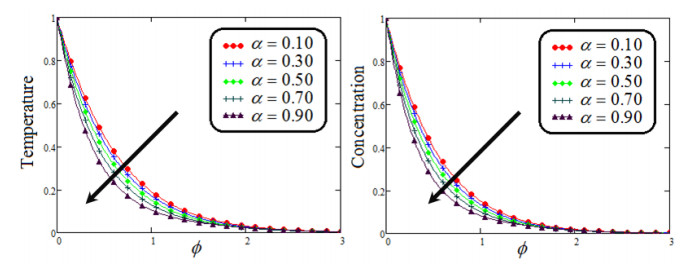
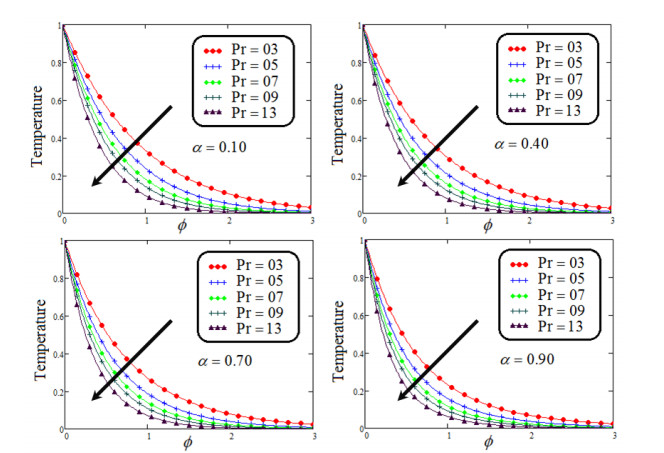
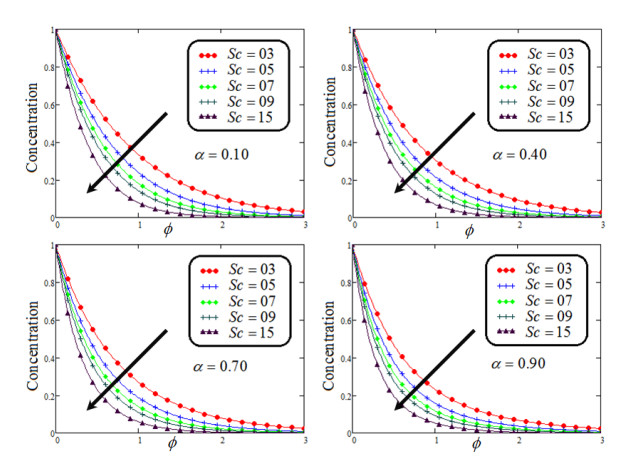
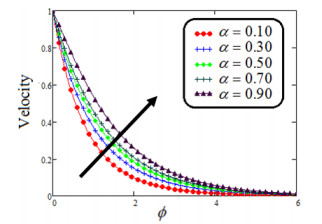

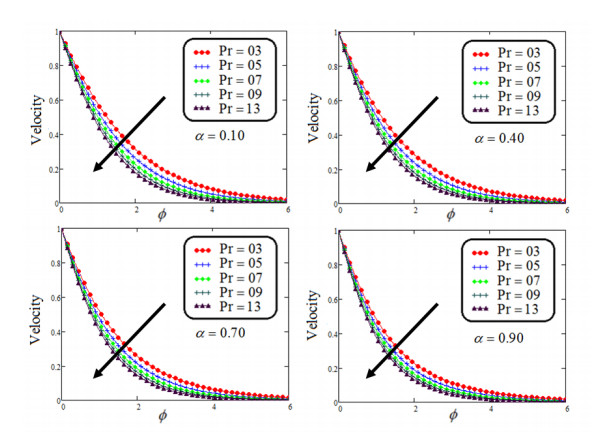
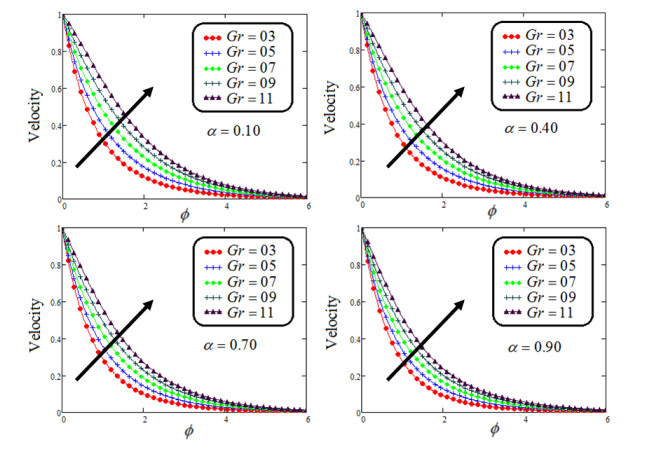
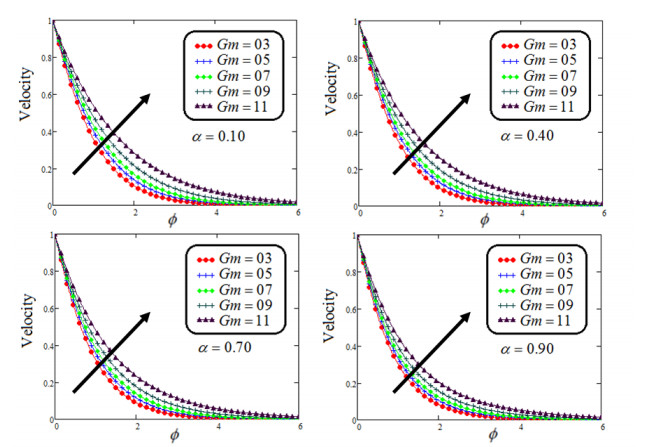
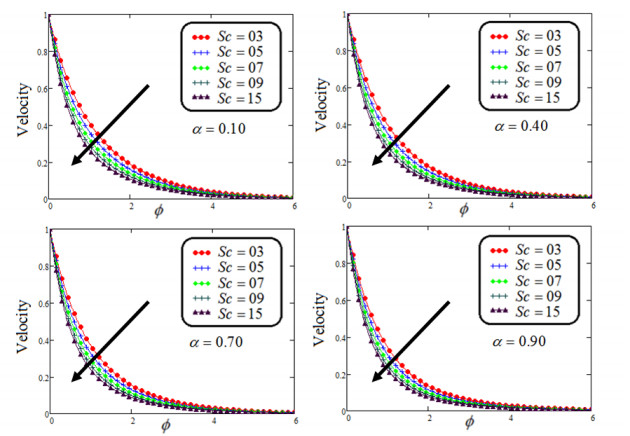
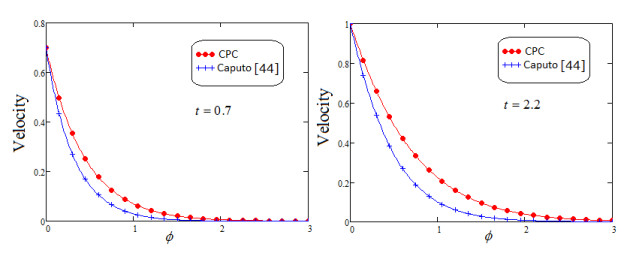


 DownLoad:
DownLoad: